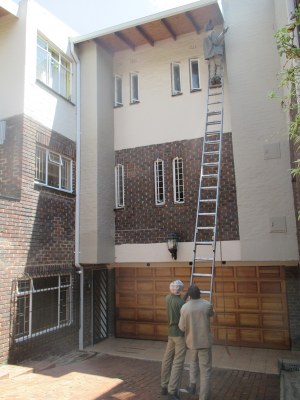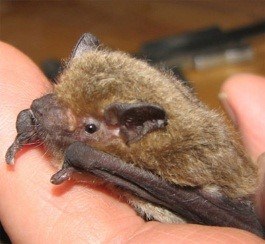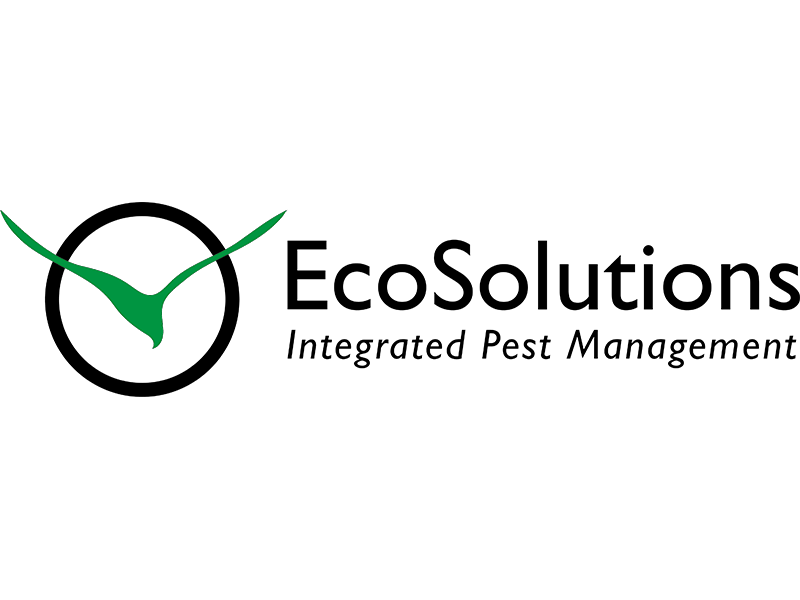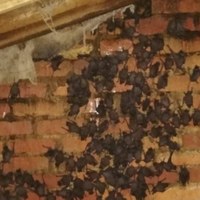Bats in the roof? - Humane Bat Removal Services
EcoSolutions Pty (Ltd) is the only permitted company accredited by GDARD to undertake bat exclusions in Gauteng.
How to identify that there are bats in your roof?
Squeaking and scratching sounds could be an indication of bats in your ceiling. The presence of guano is a good indicator of the presence of bats and white streaks of bat urine can sometimes be found on the walls at the entry and exit points the bats use.
Book a Consultant
In order to provide you with a quote to exclude your bats, we first need to arrange a site visit. The site visit is undertaken in the evening and includes a consultation with the homeowner, site inspection and a dusk survey. To book your site visit and bat exclusion consultation, please click here to visit our online shop. Alternatively, you are welcome to drop us a mail at info@ecosolutions.co.za and one of our consultants will get back to you shortly.
If you would like us to call you back, please fill in the form below
If you'd prefer to speak to a consultant, please call EcoSolutions on 011 791 7326 or 072 365 9777.
The legal status of bats
The National Environmental Management: Biodiversity (NEMBA) Act 10 of 2004: Bats are afforded legal protection under the National Environmental Management: Biodiversity Act 10 of 2004 under Chapter 4, Part 2: Threatened or Protected Ecosystems and Species. According to NEMBA Act 10 of 2004 section 56, bats are a protected species in South Africa due to bats being indigenous to the country.
The Gauteng Nature Conservation Bill: It states in Chapter 2 Part 1 of the Gauteng Nature Conservation Bill that no person may, without a permit – (a) export; (b) import; (c) hunt, outside the open hunting season (d) transport; (e) catch; (f) capture; (g) keep; or (h) trade in protected wild animals and protected birds.
How to get bats out of your ceiling?
 The complexity involved with bat exclusions cannot be understated. Bats have the ability to fit through the gap the size of your thumb to gain access to their roost. All entry and exit points need to be identified and sealed. Our exclusions maintain a focus of unobtrusive non-visible sealing. This is done using exclusion foam or, where required, a suitable mesh netting that can be forced into the larger gaps. The primary entrance and exit point requires the fitment of an EcoSolutions ‘one-way valve’ which allows the current roosting bats the opportunity to leave in the evening but prevents them from re-entering. The valve stays in position until the follow-up site visit to make certain that all the bats are out of the roof. Once the bats have abandoned the roof, the one-way valve will be removed and the remaining hole permanently sealed.
The complexity involved with bat exclusions cannot be understated. Bats have the ability to fit through the gap the size of your thumb to gain access to their roost. All entry and exit points need to be identified and sealed. Our exclusions maintain a focus of unobtrusive non-visible sealing. This is done using exclusion foam or, where required, a suitable mesh netting that can be forced into the larger gaps. The primary entrance and exit point requires the fitment of an EcoSolutions ‘one-way valve’ which allows the current roosting bats the opportunity to leave in the evening but prevents them from re-entering. The valve stays in position until the follow-up site visit to make certain that all the bats are out of the roof. Once the bats have abandoned the roof, the one-way valve will be removed and the remaining hole permanently sealed.
With any type of exclusion, an alternative should always be provided to compensate for the loss of that animal’s roost site. If we do not provide alternative roosting sites, i.e. a bat box, the bats will attempt to gain access into your ceiling. The installation of a bat box increases the success of the exclusion. EcoSolutions is an environmentally responsible company and as a consequence of this, we do not undertake bat exclusions without providing the compensatory site for bats that have been disturbed in this manner.
Excluding bats is a difficult process but it is the only ethically and environmentally friendly efficient way of removing bats from the roofs and ceilings. There are many misconceptions about how to go about removing bats. There is a tendency of pest control companies using unethical and un-environmentally friendly methods such as spraying bats with ammonia and other chemicals or disturbing bats during their hibernation season and even physically removing bat. This is unethical, environmentally irresponsible and illegal in the terms of the NEMBA Act and the Gauteng Nature Conservation Bill. Bats have a very strong tendency toward site fidelity, which means they will return faithfully to their roost sites. We also believe that if the bats are removed, there is a high likelihood that the bats will not survive.
If you would like us to call you, click here.
Conflict between bats and humans
There is often conflict between bats and humans within estates and residential properties throughout Southern Africa. There is generally an abundance of prey for insectivorous bats in these areas, resulting in large roosts and healthy population densities, however, there is also, generally, a shortage of suitable roost sites. Traditionally, bats would utilise caves, dead trees and natural cavities in which to roost but the removal of dead trees within the urban landscape has forced bats to seek alternative roost sites, i.e. roofs and ceilings. Bats are very sensitive to disturbances in their roost and become disorientated if removed. We advise not to capture, catch or transport bats rather contact EcoSolutions. Please do not disturb bats during hibernation season or breeding season, as this is traumatising for the species especially if there are bat pups.
Bats as an environmental asset
Everything in the environment has its place. Everything is inter-connected and therefore it is of utmost importance to respect the fact that bats have value in our everyday lives. Bats are known for eating beetles, plant-sucking bugs, flies, flying termites, moths and lacewings. Annoying insects, which we as humans do not want around our homes. Bats only produce one pup a year and this makes them a slow breeding species. If people remove bats in an unethical manner, there will be a decline in the species and this will cause an increase of insects which thus affects the balance of nature. Bats are a wonderful vital environmental asset and should be catered for in every environmentally friendly home.
Please find a link to an article about the insatiable appetite of insectivorous bats: Batty about Bats.
Most common South African Bat Species
Bats belonging to the suborder microchiroptera are small and insectivorous using echolocation to hunt prey at night on the wing. The two species most prevalent in Gauteng are the Cape Serotine Bat (Neoromicia capensis) and Yellow House Bat (Scotophilus dinganiI).
 Cape Serotine Bat: Small brownish bat with a greyish underbelly and semi-scruffy fur, but its colour is very variable, depending on the region in which it is found. The Serotine Bat has a relatively small snout and mouth with a dome-like forehead. Wing membranes are dark-coloured and the forearm length is about 29-38 mm with a mass of 4-10 grams.
Cape Serotine Bat: Small brownish bat with a greyish underbelly and semi-scruffy fur, but its colour is very variable, depending on the region in which it is found. The Serotine Bat has a relatively small snout and mouth with a dome-like forehead. Wing membranes are dark-coloured and the forearm length is about 29-38 mm with a mass of 4-10 grams.
 Yellow House Bat: A light brown bat with prominent yellow underbelly, eyes are clearly visible and the snout is short and broad. Yellow House Bats are medium-sized bats that are regularly seen in suburban areas flying at dusk. The forearm length is 50-58 mm and its mass is about 14-42g.
Yellow House Bat: A light brown bat with prominent yellow underbelly, eyes are clearly visible and the snout is short and broad. Yellow House Bats are medium-sized bats that are regularly seen in suburban areas flying at dusk. The forearm length is 50-58 mm and its mass is about 14-42g.
Roosting habits
Traditionally bats would utilise caves, dead trees and natural cavities but the historical removal of dead wood for fuel has forced bats to look for and also benefit from artificial roost sites. These are often the roofs and eaves of houses and other structures. Bats are a common concern in estates throughout Southern Africa. This can be difficult for house owners as bats can cause noise at night in the roof and owners do not want guano deposits in their roofs.
Colonies of Yellow House Bats living in a house roof will usually not reach more than a dozen bats in Gauteng, whilst Cape Serotine Bats live in colonies of up to 20 individuals, both relatively small colonies. Occasionally the Yellow House Bats share a home with the smaller Cape Serotine Bat and may be distinguished from the latter in flight by its larger wing size and high speed. Due to the lack of appropriate roosting sites, bats have been found to roost in the roofs of suburban areas. Both species are opportunistic crevice or hollow dwellers and usually prefer roofs with a ceiling in suburban areas, hiding between the wooden rafters and brickwork inside the roof. Due to their crevice dwelling habits, both these species will easily and readily take up occupancy in manmade bat boxes.
Breeding
Female bats give birth only once a year to single young - twins and triplets are rare. Young are born in the warm summer months any time from November to January.
Diet
There is usually an abundance of prey for insectivorous bats however bats mostly enjoy eating beetles, plant-sucking bugs, flies, flying termites, moths and lacewings.
For further information on bats species in South Africa, please follow the link.

